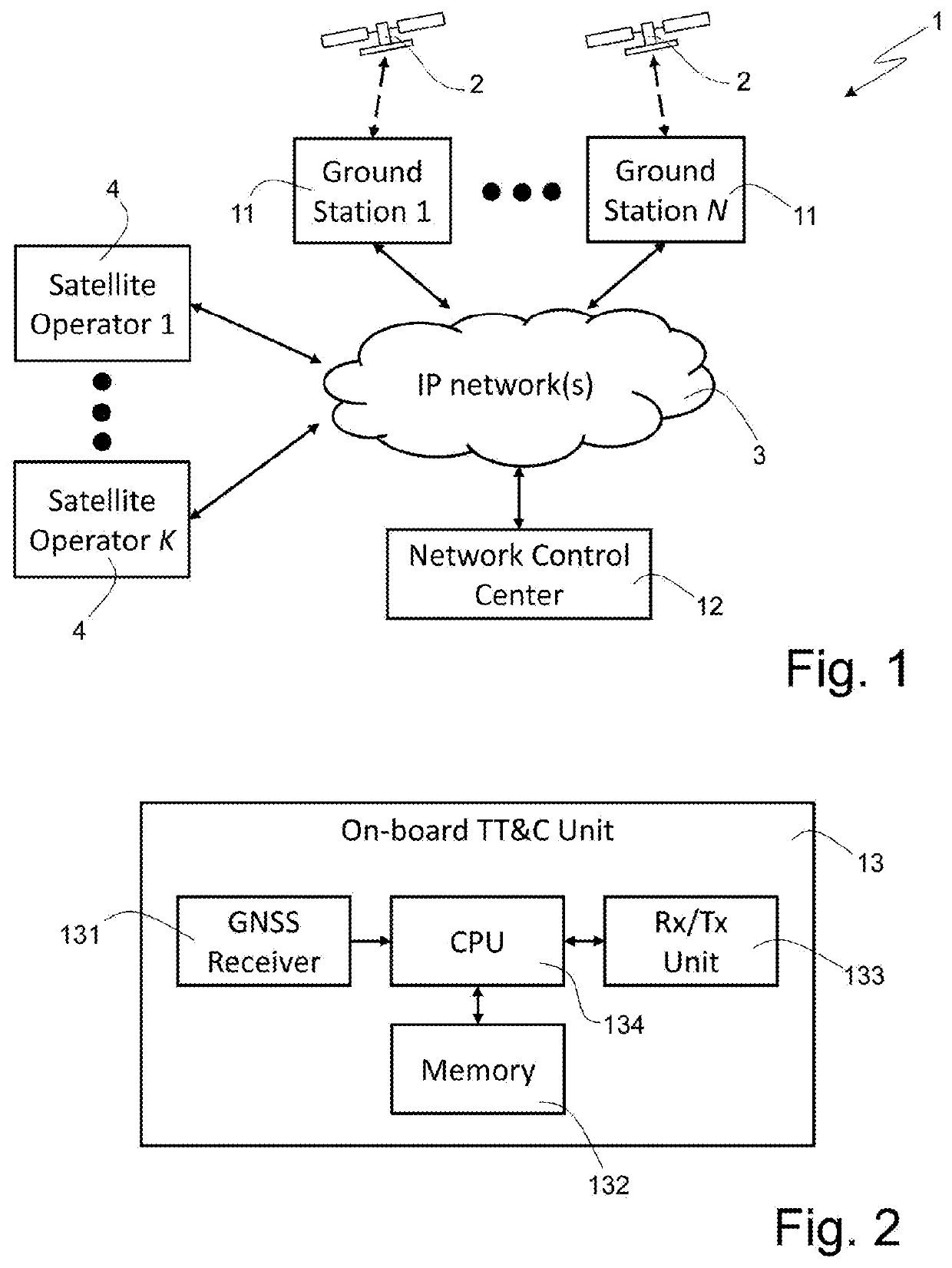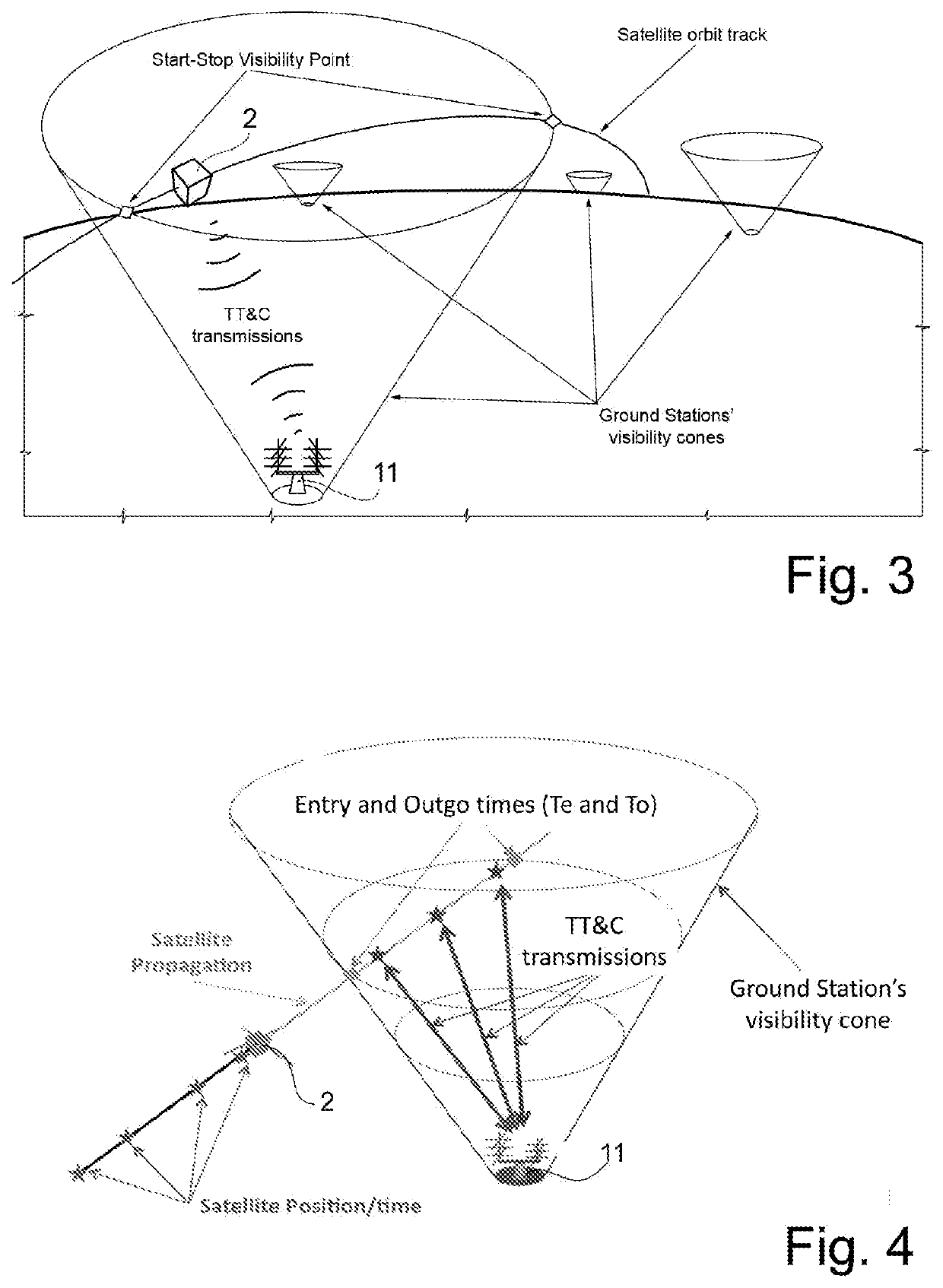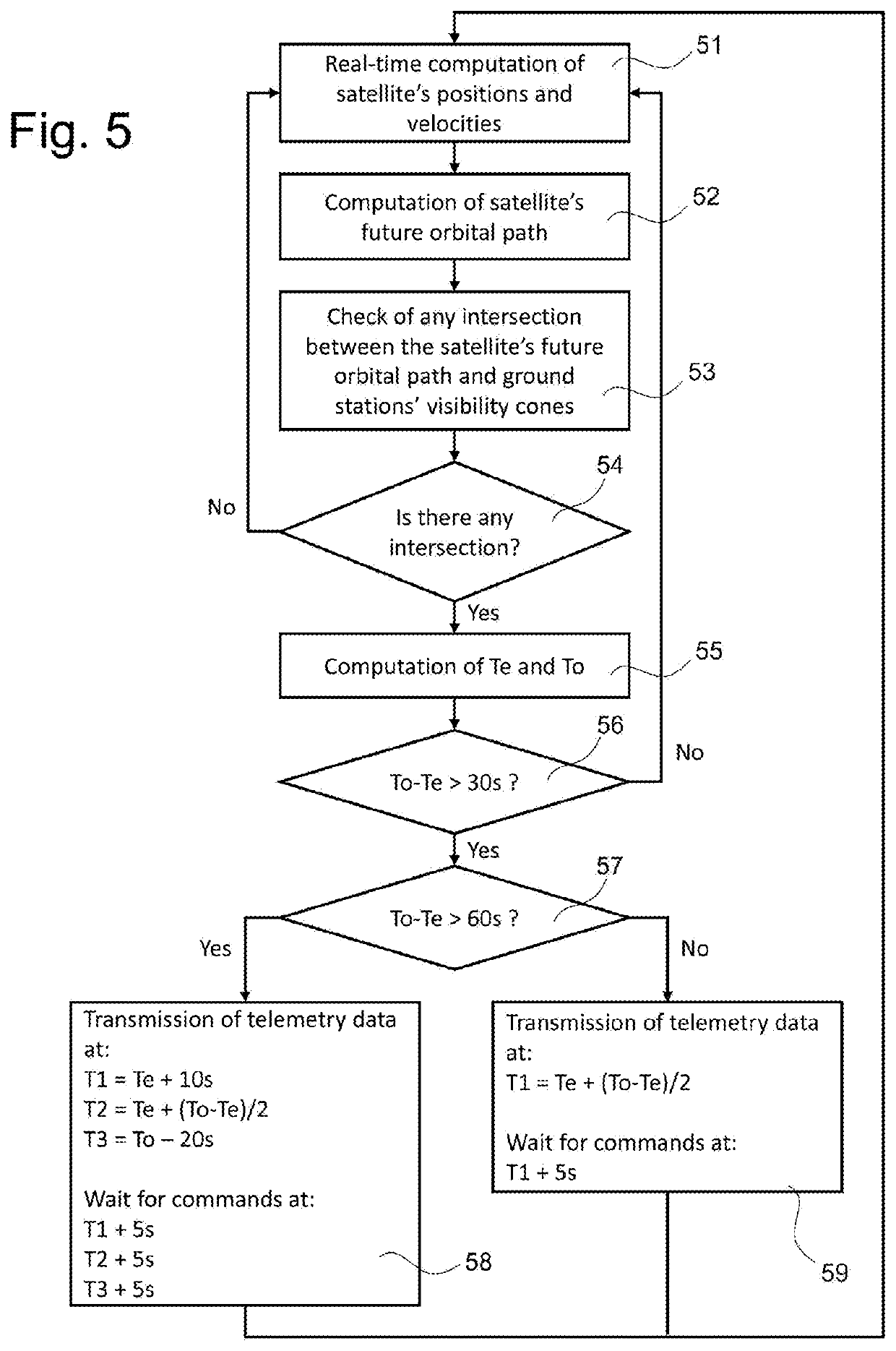Automatic satellite telemetry, tracking and command system
a satellite and command system technology, applied in the field of automatic satellite telemetry and tracking and command, can solve the problems of uncontrollable unaffordable costs for satellite operators with limited economical resources, and inability to control leo satellites for most of their orbital time, so as to achieve cheaper costs and enhance coverage
- Summary
- Abstract
- Description
- Claims
- Application Information
AI Technical Summary
Benefits of technology
Problems solved by technology
Method used
Image
Examples
Embodiment Construction
[0030]The following discussion is presented to enable a person skilled in the art to make and use the invention. Various modifications to the embodiments will be readily apparent to those skilled in the art, without departing from the scope of the present invention as claimed. Thence, the present invention is not intended to be limited to the embodiments shown and described, but is to be accorded the widest scope consistent with the principles and features disclosed herein and defined in the appended claims.
[0031]FIG. 1 schematically illustrates a satellite Telemetry, Tracking and Command (TT&C) system (denoted as a whole by 1) according to a preferred, non-limiting embodiment of the present invention.
[0032]In particular, the satellite TT&C system 1 includes:[0033]a plurality of ground stations 11, each of which is located at a respective position on earth's surface and is designed to, when a satellite 2 is in a respective visibility region of the around station 11, receive downlink...
PUM
 Login to View More
Login to View More Abstract
Description
Claims
Application Information
 Login to View More
Login to View More - R&D
- Intellectual Property
- Life Sciences
- Materials
- Tech Scout
- Unparalleled Data Quality
- Higher Quality Content
- 60% Fewer Hallucinations
Browse by: Latest US Patents, China's latest patents, Technical Efficacy Thesaurus, Application Domain, Technology Topic, Popular Technical Reports.
© 2025 PatSnap. All rights reserved.Legal|Privacy policy|Modern Slavery Act Transparency Statement|Sitemap|About US| Contact US: help@patsnap.com



